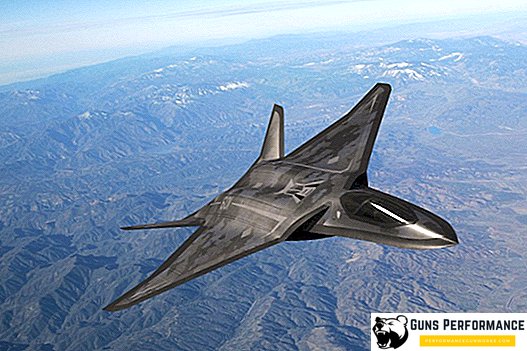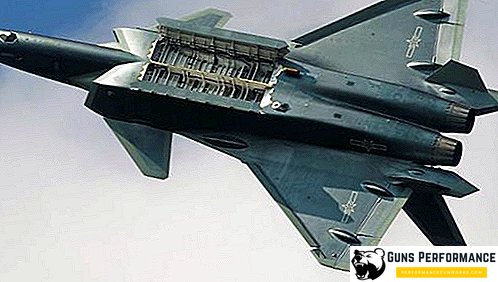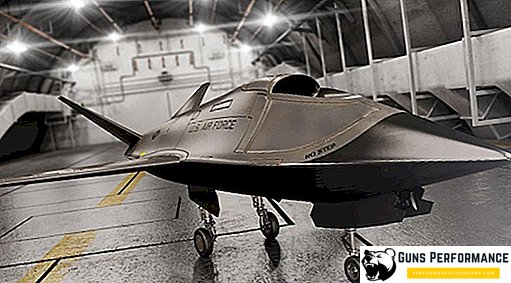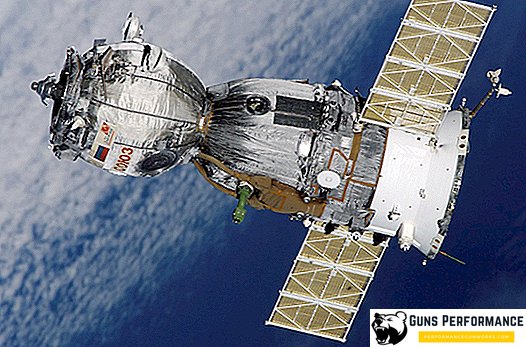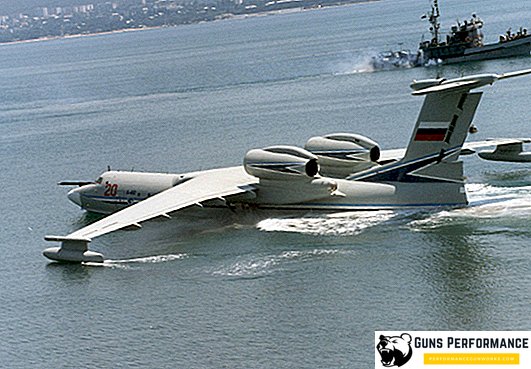The IL-18 is a turboprop medium and long-haul passenger aircraft. It was developed by the Ilyushin experimental design bureau in 1957.

The history of the development and operation of IL-18
In the 1950s, not only in the Soviet, but also in the world civil aviation came a period when there was a real threat that the era of reciprocating aircraft would end. For example, passenger aircraft with piston engines (for example, Li-2) available in the USSR no longer satisfied the ever-increasing demand for air transportation. First of all, this concerned the volume of flights, which was negligible, especially against the background of the recently ended World War II, due to which the number of military aircraft was several times higher than the number of passenger aircraft. It was in this connection that already in the early 50s the creation of passenger aircraft of the new, post-war generation began in the most economically strong countries.
In the USSR, the Tupolev and Ilyushin Design Bureau were simultaneously engaged in the creation of a new ship. At the same time, their opinion about the future aircraft was somewhat different: for example, the Tupolev design bureau started creating a jet passenger liner (the first in the country) based on a Tu-16 bomber, while the Ilyushin bureau decided to create a turboprop the aircraft. The Soviet leadership favorably treated both developments.
In the spring of 1956, a resolution of the Council of Ministers of the USSR on the creation of an IL-18 turboprop aircraft was issued - this was the name given to the Ilyushin Design Bureau project. The development of the aircraft and the construction of its first prototype went very quickly, so that in the summer of the next, 1957, the aircraft was introduced to the party elite and members of the government of the Soviet Union. The machine was warmly received by N. S. Khrushchev and received a proper name: "Moscow".
Already in July of the same year, the IL-18 made the first flight. Also at this time, continued testing of the aircraft in order to determine the best engines for it. In their process, the final choice fell on the AI-20 turboprop, which were the most reliable, powerful and economical for the aircraft. After this, mass production of the aircraft began.
Already in 1959, after passing all the necessary ground and flight tests, the IL-18 began to be actively exploited on medium and long-distance domestic routes in the Soviet Union. The plane was unpretentious to use, reliable enough and at the same time did not require long runways, which allowed it to remain the main medium-haul passenger airliner in the USSR until the 1970s. Also IL-18 was actively supplied for the countries of the socialist camp, as well as for countries of the course friendly to the USSR. At the same time, the airliner was also welcomed by local passengers and specialists.

At the same time, active work was continued on the improvement of the IL-18 and the creation of its new modifications with improved characteristics. So, in 1958, the IL-18A was developed, and launched into mass production. Two years later, the IL-18B was developed with an improved on-board electronics system. Also created cargo modifications of the aircraft and even military options.
By the mid-1970s, the mass production of IL-18 began to seriously decline. Being the main medium-haul airliner on domestic airlines, the IL-18 began to be massively replaced by more modern and powerful IL-62 and Tu-154. This was mainly due to the fact that the Soviet industry took a course mainly on the production of jet aircraft instead of turboprop. It also affected the moral obsolescence of the aircraft, and the full potential of its modifications was exhausted.
Nevertheless, a number of IL-18 aircraft nevertheless could “survive” their mass write-off, which took place in the late 70s - early 80s. As of 2010, there were ten IL-18s in operation in countries such as Russia, Ukraine, the DPRK, Sri Lanka and Somalia.
Overview IL-18 and its characteristics
The IL-18 is a low-wing aircraft with a single fin tail and a three-post chassis. The aerodynamic configuration of the aircraft is normal. At the same time, the wing of the IL-18 is not arrow-shaped, but almost perpendicular to the fuselage. Nevertheless, the design of the liner, as a form of the wing, was meticulously calculated, thanks to which the aircraft received very good speed characteristics, as well as high reliability and stability in flight.
The Il-18 power plant is represented by 4 AI-20 turboprop engines (the NK-4 was also used in the first models), which are installed under the wing.

Flight technical characteristics of the passenger aircraft IL-18:
- Length: 35.9 m.
- Height: 10.2 m.
- Empty weight: 33,760 kg.
- Wingspan: 37.4 m.
- Wing area: 140 square meters. m
- Cruising speed: 625 km / h.
- Maximum speed: 685 km / h.
- Ceiling: 10,000 m.
- Flight range with maximum load: 4,300 km.
- Engines: 4 x AI-20.
- Traction: 4 x 4250 l. with.
- Number of passengers: 120.
- Maximum take-off weight: 64,000 kg.
- Maximum payload: 13,500 kg.
- Fuel tank capacity: 23,700 l.
- Maximum flight range: 7 100 km.
- Takeoff run: 1000 m.
- Run length: 800 m.
- Cabin length: 24 m.
- Interior width: 3.2 m.
- Cabin height: 2 m.
Aircraft modifications
In just over 20 years of development and serial production of the IL-18, the following modifications were created and built:
- IL-18A - the first serial modification of the IL-18, equipped with NK-4 turboprop engines.
- IL-18 "Salon" - a modification of the aircraft, designed for the first persons of the state. In this case, this model converted versions of the IL-18B, IL-18B and IL-18D.
- IL-18 "Strip" - an experimental version, equipped with a complex for automated takeoff, flight and landing of IL-18.
- The IL-18B is a modification of the IL-18, equipped with more powerful and efficient AI-20 engines.
- IL-18V - modification of the aircraft with a modified layout (three passenger cabin).
- IL-18D is a modification of the IL-18, equipped with fuel tanks of increased volume and thus having an increased flight range. The passenger compartment has 20 passenger seats. Mainly used for flights to the North Pole. Another designation - IL-18-26A.
- IL-18Gr - cargo modification of the aircraft. Since 1978, passenger models of the IL-18 began to be refitted into this model.
- IL-18GrM - the second cargo version of the IL-18. It has an increased load capacity, as well as a large door in the left side for more convenient loading.
- The IL-18D is a more advanced IL-18, equipped with more advanced AI-20M engines and having increased flight range as well as greater payload.
- Il-18D "Pomor" - an aircraft equipped for conducting fish intelligence.
- Il-18DC "Cyclone" - a modification of the IL-18, designed for conducting meteorological intelligence.
- IL-18DORR - aircraft long-range detection of fish resources.
- IL-18E - modification of the IL-18 with increased passenger capacity (up to 110 people), as well as a more comfortable cabin.
- IL-18LL - aircraft - flying laboratory.
- IL-18RT - aircraft used as a measuring point for recording telemetric information. Another designation - IL-18SIP.
- IL-18RTL - aircraft, which was the prototype of the IL-18RT.
- IL-18T - transport and sanitary modification of the IL-18. Other names: IL-18AT, IL-18BT, IL-18VT.
- IL-18TD - airborne modification IL-18. Equipped with a ramp for the release of the landing unit.
- IL-18USH - modification of the IL-18, designed to prepare the navigator for the Russian Air Force.

Conclusion
Due to its unique characteristics (simplicity in maintenance, reliability in operation and economy), the IL-18 for a long time became the main medium-haul passenger airliner in the Soviet Union. However, in view of the fact that the industry of the USSR already in the 1970s set out to produce mainly jet planes, its era was over. Nevertheless, a large number of modifications of the IL-18, as well as the fact that even today a number of machines are in operation, allows us to say with confidence that this aircraft left an important mark on the history of domestic aviation.





